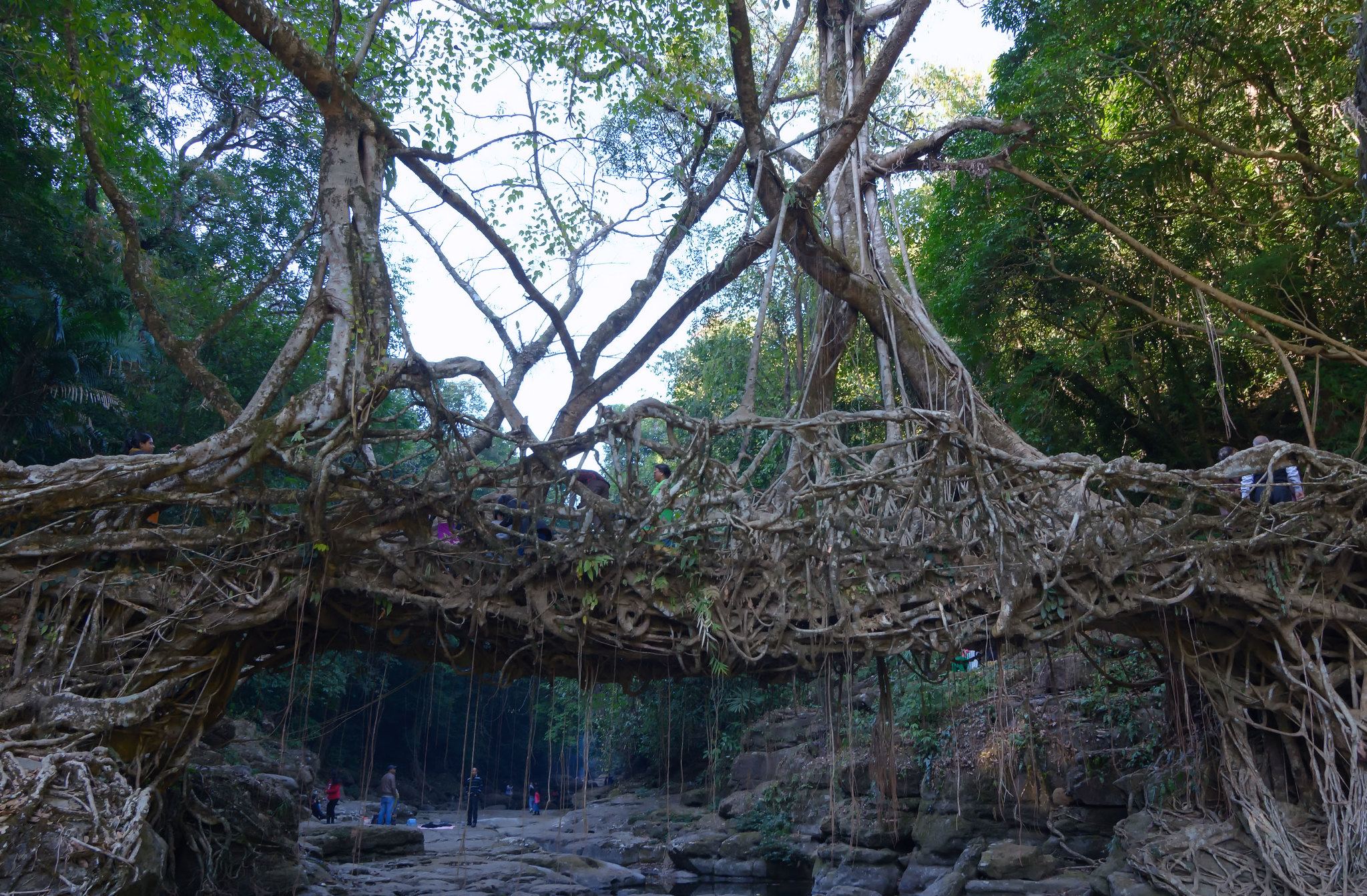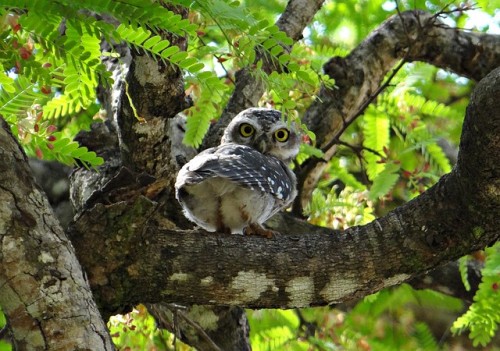This photograph of the famous root bridge of Meghalaya was taken by Nityananda Mukherjee. This is what he had to say about this unique bridge,
These bridges are not built, they are grown. And it takes almost a decade or more to become strong and sturdy. The original architects of this natural bridge building technology are the forefathers of the Khasi tribe of Meghalaya, one of the three major tribes in this hill state. The other two tribes are the Garos and Jaitias. Though this ancient technology appears to be theoretically simple, practically it is very difficult as it takes a long time to grow a root bridge.
Roots of the rubber tree — Ficus Elastica are the pavements for these natural bridges in the thick forests of Khasi Hills district. Strong secondary roots of this rubber tree are manipulated to grow horizontally through the tunnels of hollowed betel nut trunks across the fast flowing rivers.
While the construction of modern concrete bridges may take three or four yeas, these types of bridges take very long to develop into a firm bridge. Normally it takes around 10 to15 years, which is the normal construction period. These bridges grow to approximately 50 to100 feet long and have strong and deep roots providing a stable foothold. They can carry up to 50 people at a time. The life of these bioengineering wonders is estimated at 500 years, more than the life span of most of man made modern bridges.
The most famous Umshiang Double Decker root bridge in Nongriat village, south of Cherrapunjee about 70 km from the capital Shillong is estimated to be two centuries old. This place receives a lot of rain, so wooden bridges rot and decay. But Root bridges are alive and growing and so gain strength over time.
If you want to share your nature photographs with us, participate in India’s Endangered Wild Shots or send to contact (at)indiasendangered (dot) com



